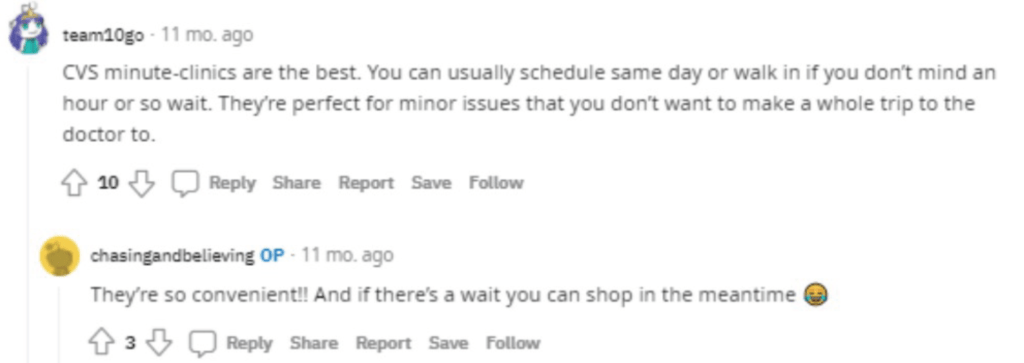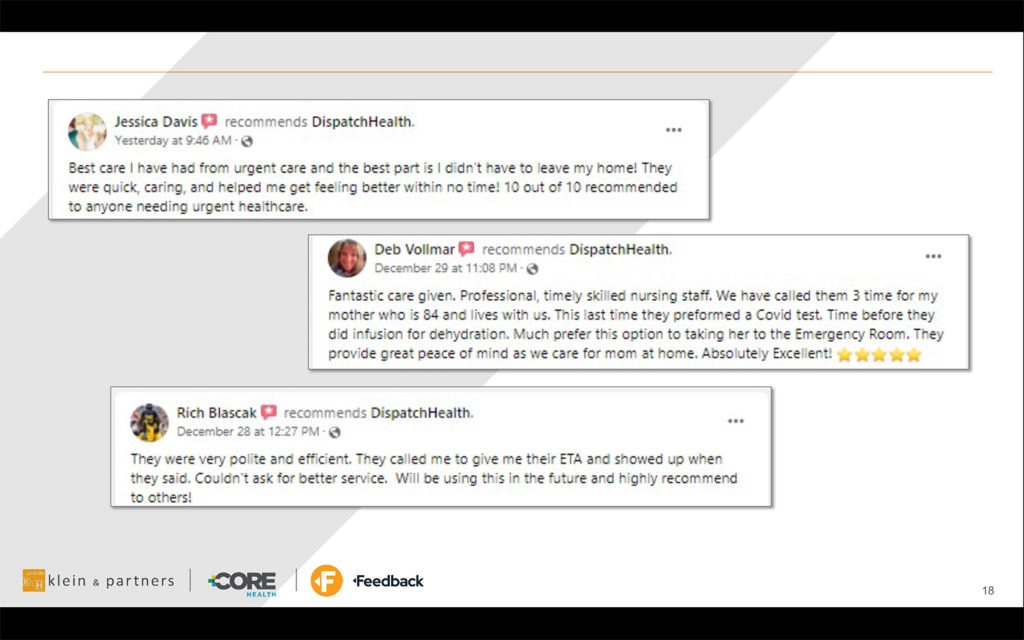Health Care Disruption? Consumers Say, “Bring It On”
Is disruption a good or bad thing? It depends on whom you ask.
// By Jane Weber Brubaker //
 Let’s talk about disrupters. Health care has largely viewed those encroaching on its turf — from retail, big tech, and startups, among others — as a threat. But how do consumers see things? Before the COVID-19 pandemic, consumer experience in other industries shaped expectations of health care, and health care didn’t often measure up. Then, with the onset of the pandemic, delivery of everything changed, including delivery of care.
Let’s talk about disrupters. Health care has largely viewed those encroaching on its turf — from retail, big tech, and startups, among others — as a threat. But how do consumers see things? Before the COVID-19 pandemic, consumer experience in other industries shaped expectations of health care, and health care didn’t often measure up. Then, with the onset of the pandemic, delivery of everything changed, including delivery of care.

Rob Klein, founder and CEO, Klein & Partners
To keep patients and physicians safe, providers converted office visits to virtual visits. Urgent care — and even hospital care — came into the home. “COVID taught everyone you can get the world delivered to you,” says Rob Klein, founder and CEO of Klein & Partners.
Klein, with co-presenters Laila Waggoner, senior health care strategist at Core Health; and Dean Browell, chief behavioral officer at Feedback, shared recent research on consumer attitudes about disruption in their session at HMPS 2022, “Disruptive & the Traditional: What Do Consumers Say?”

Laila Waggoner, senior health care strategist, Core Health
The changes brought about by the pandemic are now part of the permanent landscape, and it’s clear what consumers value. “Consumers are going to use whatever’s convenient,” Waggoner says. “They don’t really care who’s providing it.”
“We keep acting like health care isn’t a transaction,” says Browell, “and the consumer absolutely sees it as such.”
Here, we share key findings from Klein’s quantitative research, insights from Feedback’s study of consumer behavior on social channels, and results of a poll of health care professionals and how they view disruption.
Disrupters That Consumers Value

Dean Browell, chief behavioral officer, Feedback
As part of the quantitative research, participants were asked to respond to questions related to their views about a range of disrupters — Amazon Care, CVS Health Hub, Walmart Health, and others, as well as classes of disrupters such as remote patient monitoring, urgent care at home, and hospital at home. The questions included:
- Based on the description provided, do you think it would be a good thing for improving health care (whether you would use it or sign-up for it or not)?
- How likely would you be to sign-up or use this new health care service?
Responses reveal that new modes of care delivery are attractive to a growing percentage of consumers. The top-ranked disrupters were:
- Urgent care at home – 38 percent / likely to sign up – 20 percent
- Hospital at home – 37 percent / likely to sign up – 24 percent
- CVS Health Hub – 29 percent / likely to sign up – 17 percent
- Amazon Care – 22 percent / likely to sign up – 15 percent
- Walmart Health – 20 percent / likely to sign up – 14 percent
Noteworthy, the results were significantly higher for millennials and Gen Z, and these two groups are establishing patterns for the future. “Millennials, with the exception of those who are parents, aren’t needing that much health care yet,” says Browell. But he points out, “This is the habit they will take with them as they age into those middle innings of life.”
The Biggest Disrupter of All? COVID Brain
Survey participants were asked to agree or disagree with these statements:
- I’m having trouble remembering simple things.
- I find it harder to concentrate.
- I find myself losing my patience.
About a third of respondents overall agreed, and almost half of millennials agreed. The implications for marketing are clear. “Our advertising has to be simple, catchy, repetitive, and the brand has to be the star,” Klein says. “
He cites Geico (15 minutes could save you 15% or more on car insurance) and Nike (Just do it) as examples. “We have a finite amount that we can remember,” Klein says. “If you’re not connecting with [consumers] immediately, you’re losing them.” Connecting with empathy is key.
Consumers Are Grateful When Health Care Gets It Right
When health care meets or exceeds expectations, consumers can be effusive in their praise. Browell, a digital ethnographer, shared examples of consumer comments about Dispatch Health, a provider of urgent care at home. The language consumers use — “best care,” “fantastic care,” “highly recommend” — should get the attention of traditional health care providers. Browell says, “I have rarely in the 13 years that we’ve been at this seen such glowing reviews as I have for a single brand than Dispatch Health.”
Quality of Care — Disrupters vs. Traditional
Based on a poll of industry professionals, about half believe there is parity between care provided by disrupters and traditional providers. “We asked whether people felt that the quality provided by disrupters was better, equal to, or worse,” says Waggoner. “About 50 percent of [people in this industry] say it’s equal, 40 percent say worse, and only about 11 percent say [disrupters are] delivering better care.”
Some traditional providers view care in a retail clinic as substandard and believe that discerning patients know the difference. One physician commented, “My well-insured patients will continue to see me for primary care because they recognize the value of my clinic.” He then compared the quality of care he provides to a BMW vs. care in a retail clinic, the equivalent of a 1988 Ford Taurus.
But quality is in the eye of the beholder, and patients have the final say about what matters most to them.
Convenience Equals Quality
“Convenience actually equals quality to many consumers,” says Browell. Consumers give high marks, for example, to walk-in clinics and virtual visits — and recommend these services to others. They use words like “easy,” “convenient,” and “the best” to describe their experience.


The pandemic was rife with losses of all kinds, including lost time. “We’ve lost a couple of years of our lives and we’re no longer going to accept waiting in a doctor’s office for two or three hours,” Klein says. “Those days are gone. We have to accept that [consumers’] time is valuable, and we have to change things around for them, not make it convenient for us.”
One example Browell shared about the difference between consumer and provider perceptions of retail clinic care is telling. He found that providers spoke of the stress of having too few people between them and patients. “The irony is, the consumer on the other side loves that,” Browell says. “That’s fewer people between their diagnosis and treatment. They don’t want to keep re-explaining themselves to multiple people within the doctor’s office.”
Consumers Are in Charge
Care used to begin with a visit to the primary care office, Waggoner says. Now, technology is putting the control in consumer hands. Waggoner adds, “We found control ends up equaling, in their minds, a better experience.”
In describing the evolution of consumer behavior, Browell notes, “What was typically seen as a naive consumer is now intensely empowered. They know their options.”
Key Takeaways
- “COVID Brain” is real — marketers should factor the impact of diminished memory and attention span into advertising.
- The pandemic accelerated different modes of care delivery that consumers like.
- Younger cohorts (millennials and Gen Z) are more inclined to favor new models.
- Consumers value ease and convenience and equate it with quality.
- Bottom line: Consumers are pragmatic and will choose options that make the most sense to them.
Download the full presentation here.
Jane Weber Brubaker is executive editor of Plain-English Health Care, a division of Plain-English Media. She directs editorial content for eHealthcare Strategy & Trends and Strategic Health Care Marketing, and is past chair of the eHealthcare Leadership Awards. Email her at jane@plainenglishmedia.com.

